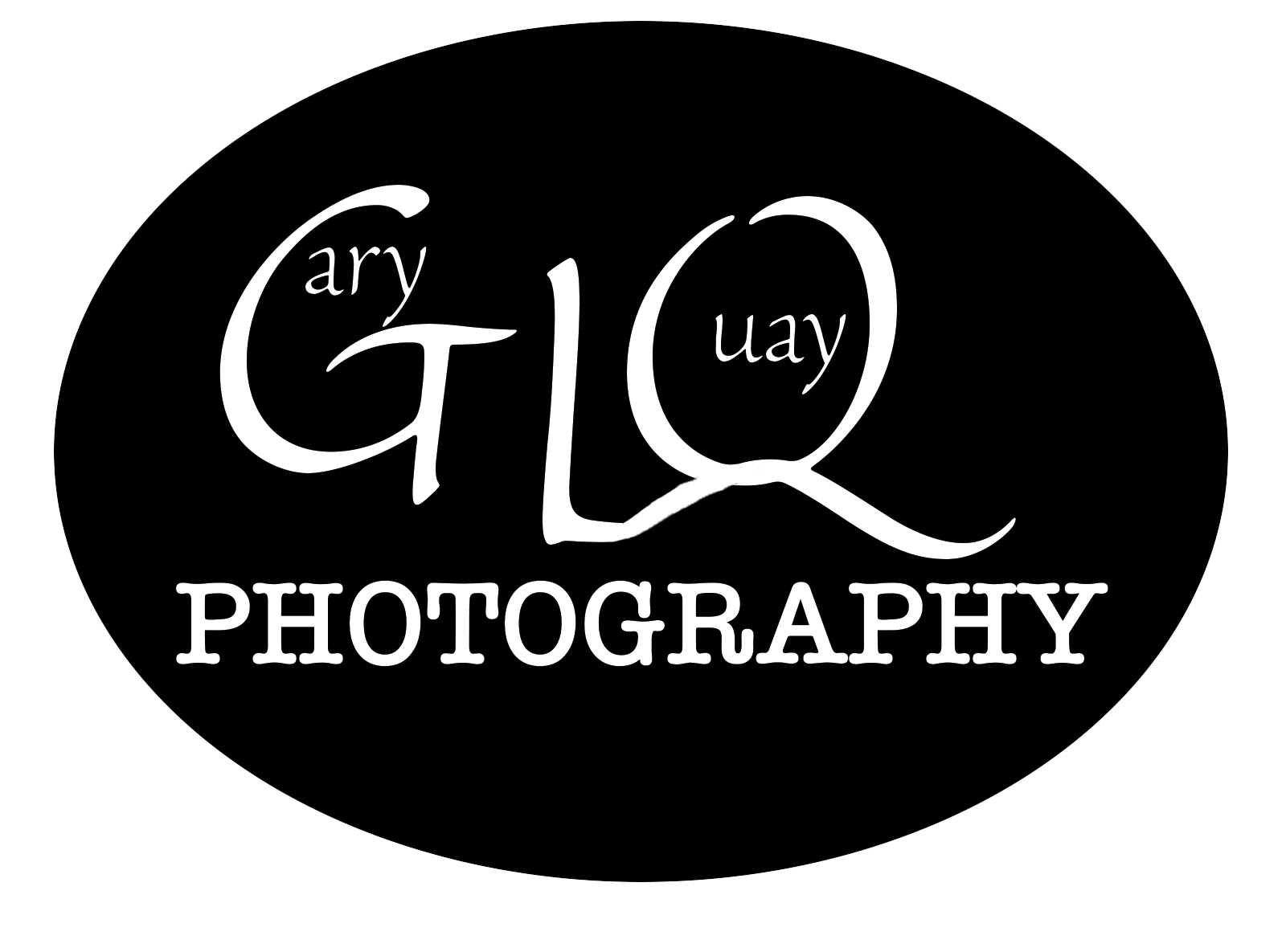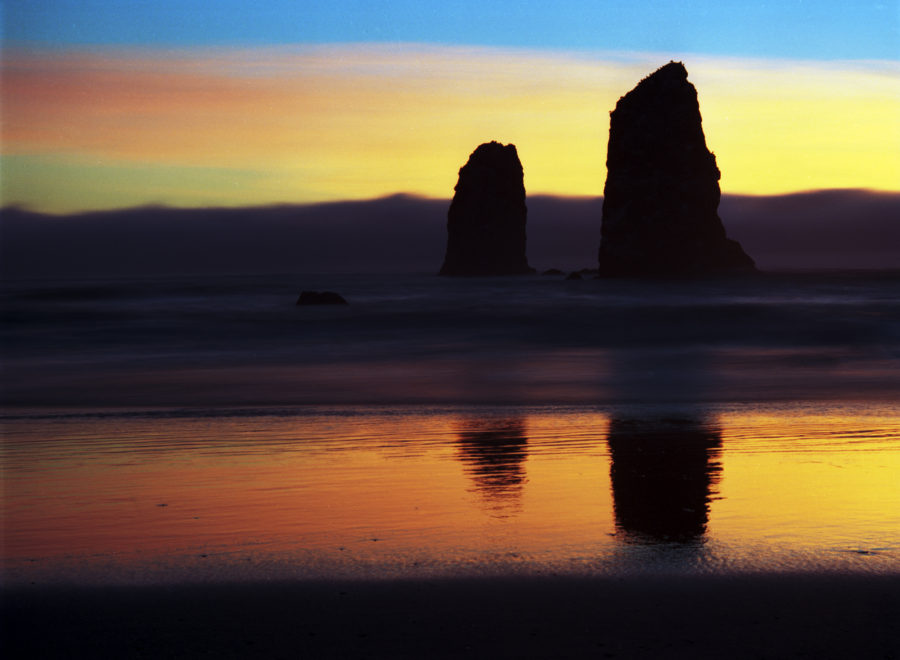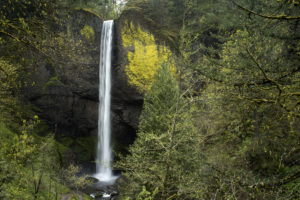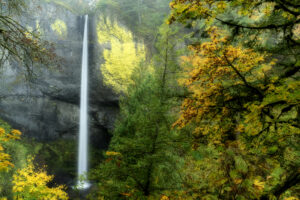The Oregon Coast is a particularly stunning shoreline, sporting topographical marvels much more dramatic than merely the sandy interface between sea and land. The Pacific Northwest’s volcanic past left its mark with haystack rocks in the surf, and with the Coast Range: a mountain range that runs north to south from the Columbia River to the Coquille River in souther Oregon. What the Oregon Coast Range lacks in elevation, it makes up for in precipitation. It is the mountains, and the volcanic plugs and cones dotting the surf that give the Oregon coast much of its beauty. There are beaches, of course, but along quite a bit of the Oregon Coast the ocean tides wash basalt, and not sand.

I have visited the Oregon Coast in all seasons since arriving in the Pacific Northwest in 1991 in a pickup truck, which was named “Entropy” due to the number of parts I replaced, and the amount of sheet metal you could see through. Entropy is Newton’s Second Law of Thermodynamics, and in a nutshell states that everything in the universe tends toward decay and disorganization. I have gone there for the sunsets, for the king tides, the beach walks, and the salt water taffy, much to my dentist’s chagrin. I used to have a Christmas tradition of driving to Cape Foulweather to view, well… the foul weather. I have dragged a plethora of cameras to the coast at various times, many simultaneously. Here they are:
- Minolta XG-1
- Nikon F3
- Speed Graphic 4×5
- Super Speed Graphic 4×5
- Sinar Alpina 4×5
- Deardorff 8X10
- Kodak Commercial 8×10
- Hasselblad 500CM
- Noblex 06/150 panoramic
- Nikon D300
- Nikon D810
- Pentax 67
- Calumet 45N
- Bosley 35mm
- Argus C3 (the brick)
- Graphic 35
- Kodak Jiffy 620
- Kodak Primo Pony
- Kodak Brownie
- B&J Rembrandt 5×7
- Calumet C1 (that thing is heavy!)
The experiments are over, however, and I’m down to a basic camera kit, which consists of my Nikon D810, the Deardorff, Sinar, Hasselblad and the Noblex (5 in all). Many of the afore mentioned cameras have been sold off, or put into usage only in the studio. I don’t run a museum, so cameras I don’t plan to use again get sold unless they have stopped working. The C1 is now strictly a studio camera, and the Kodak Commercial is a special use camera for my 760mm SK Grimes lens, which requires a yard of bellows draw to focus at infinity. Someday, I will explain that to people who have never used large format cameras, but bear with me for now.
The list of cameras is not intended to be showy, or ostentatious about owning a lot of cameras. It’s about being a seeker. I’m always looking to get to that sweet spot between speed and quality. I’ve made a lot of missteps along the way. I’ve ruined a lot of film by not being able to settle on what equipment / film / processes I wanted to use. I used everything I could get my hands on, and paid a price for it in unusable negatives, and money spent. Although, I’ve had some good ones, mind you.

As I reach toward 60 (yikes), I seem to be letting the periphery items in my kit go by the wayside. My intention is to bring the cameras and lenses that I know work every time, and to stick to a few films and developers instead of all of them. This way, I can deliver consistent quality, and don’t drive 4 hours to come away with unusable negatives. So, I am sorry to say goodbye to Adox, Arista, Foma, Agfa, Rollie, and CineStill, but I’m sticking to Ilford, Kodak, and Fuji. Ilford will get all of my black and white film purchases, and Kodak and Fuji get color slides and color negatives.

That said, I’m testing two new black and white films that are supposed to be like the fabled Kodak Panatomic X (possibly the subject of a future post). If true, Ilford may get the boot too. That matter is for another day, though.

One thing that has helped me over the last few years has been my introduction to digital photography. Readers who have followed my blog since the WordPress days will know that I was determined to not go digital. I am glad, however, that I did that. I held out for a long time, but when I moved to Hood River in 2015 (I returned to the Portland area in 2019), I found that a darkroom was impossible in my new house. Reluctantly, I bought a used Nikon D300. One of the benefits of the long wait was that I adopted digital technology when it was becoming really good. Before then, I think I would have been disappointed. My digital photography as helped my film photography in a number of ways:
- Instant results. I can check my film exposure with the digital camera. I still take light meter readings, but I am using the digital camera to hone my skills.
- Time away from the darkroom has allowed me to think more clearly on my direction for film photography. I can more honestly look at my mistakes, and adjust my methods.
- I have improved my compositional skills by taking a lot of really bad pictures that I can delete. If I am not sure of the composition, I use digital. If I am sure of it, I take a few digitals to fine tune, take my film pictures, and then follow up with some more digital before I move on.
- I don’t miss sunrises and sunsets while setting up my camera. With the digital, I can snap a few quick pictures, and then get out the large format film cameras.

5. I have learned to color correct, and to more tastefully play with color.
The Oregon Coast on 5 cameras per day is considerably down from what I used to take. I remember driving to Cannon Beach with so many cameras that it filled up my car. Was it worth it? No. More recently, I drove to the coast with only my Nikon. In the summer, film cameras can cook in the hot car, and the film may fog. I take only what I can carry with me these days unless the temperatures allow. Getting the camera habit under control: That’s what I am learning.


Thanks for reading!
Gary L Quay
Technical Data
Featured Image: Cannon Beach at Sunset
Camera: Hasselblad 500 CM
Lens: 250mm Carl Zeiss
Film: Kodak 100 UC
Cannon Beach, Oregon at Sunset
Camera: Nikon D810
Lens: Vintage 50mm Nikkor
Ocean, Fence, and Picnic Table, Indian Beach, Oregon
Camera: Deardorff 8×10
Lens: 165mm Schneider Angulon
Film: Ilford HP5+ Developed in Kodak HC110
Haystack Fire
Camera: Hasselblad 500CM
lens: 80mm Zeiss Planar
Film: Fujichrome Velvia 50
Cape Foulweather During Fair Weather
Camera: Nikon D810
Lens: 24-85mm Nikon
Rock Formation, Oregon Coast Near Lincoln City, December 2019
Camera: Nikon D810
Lens: 24-85mm Nikon
Astoria Night Harbor
Camera: Hasselblad 500CM.
Lens: 50mm Carl Zeiss.
Film: Kodak Ektar 100
Pylons, Foundation, and Hotel, Astoria, Oregon
Camera: Nikon D810
Lens: Lensbaby Velvet 56.




